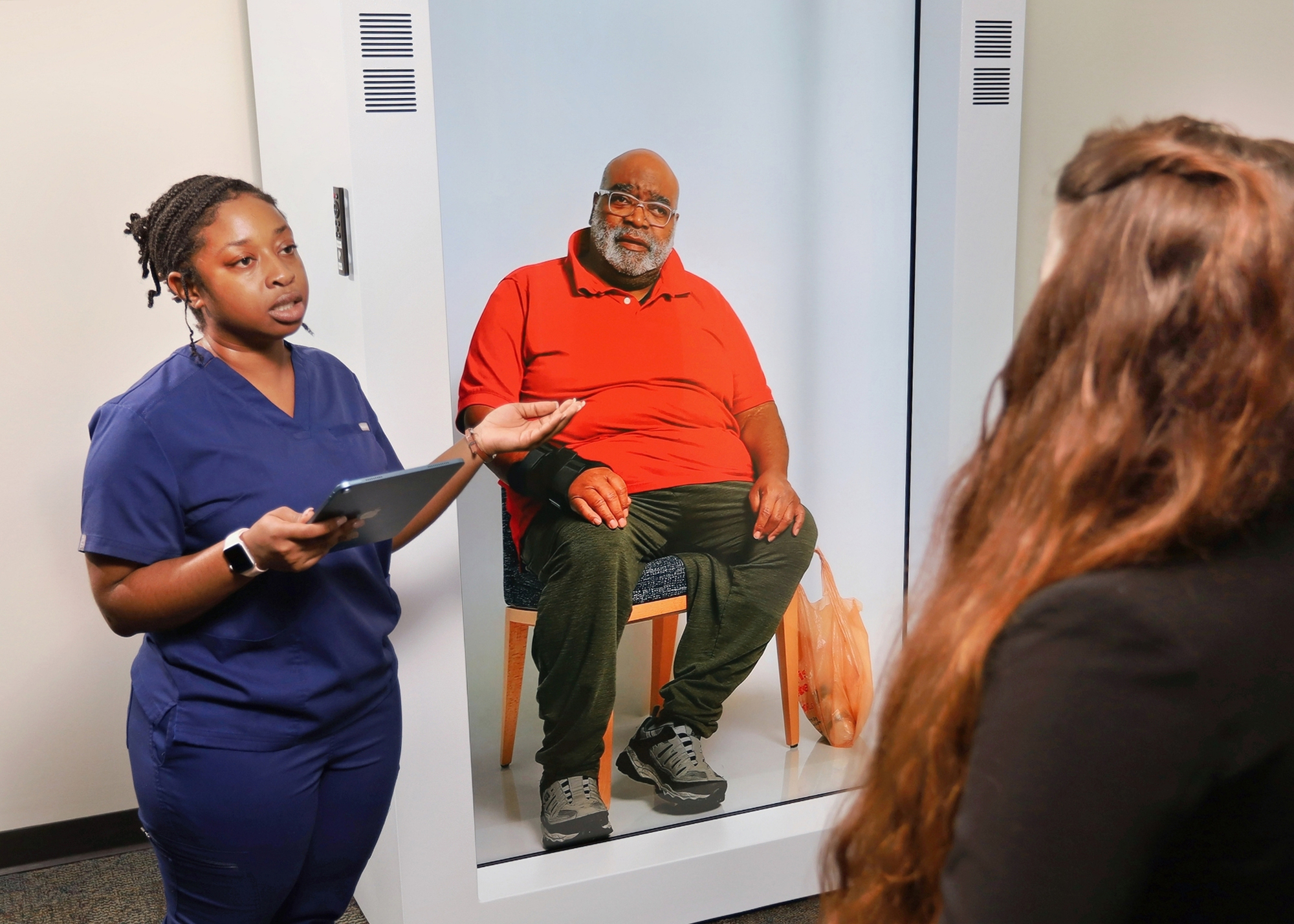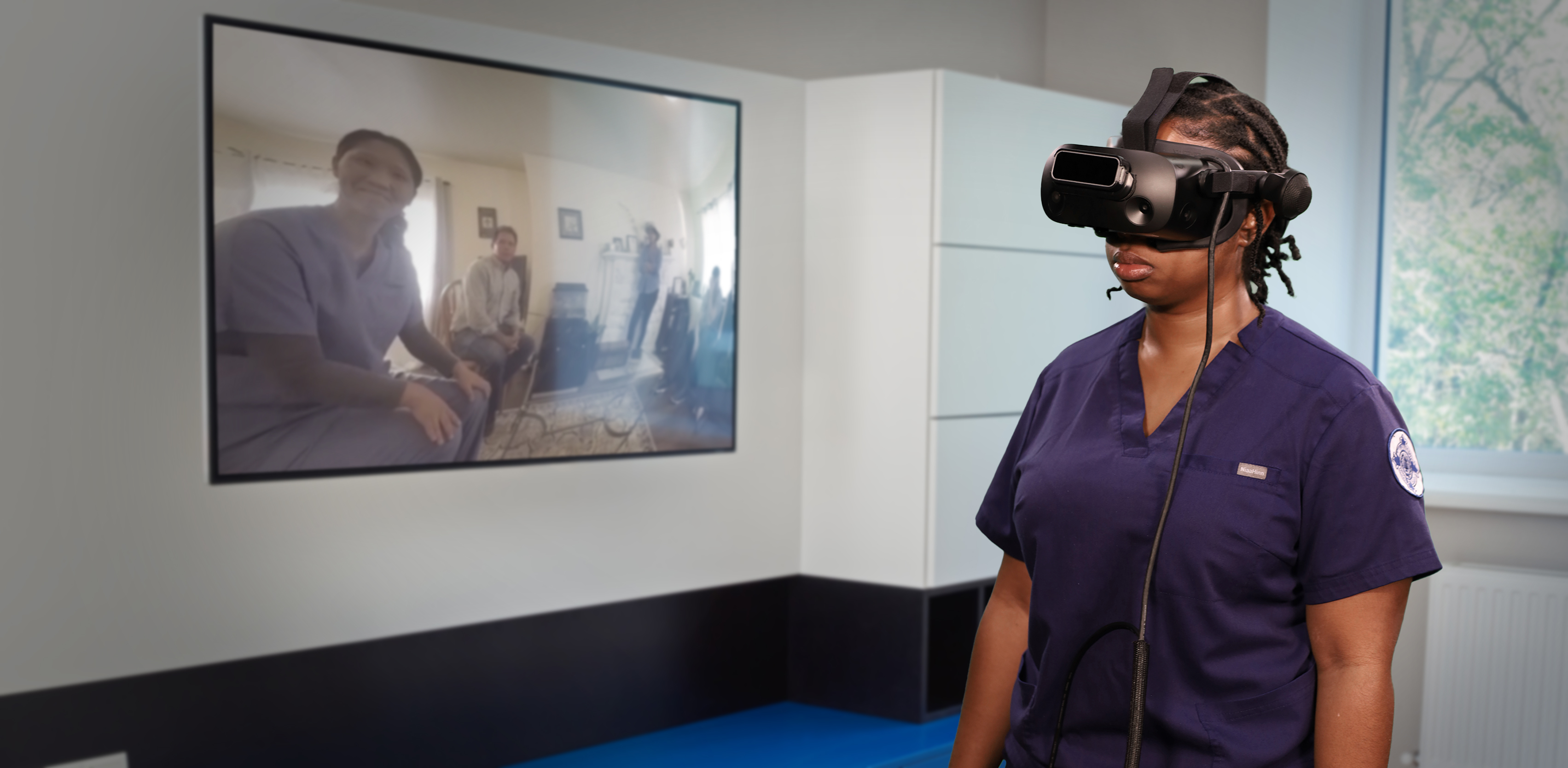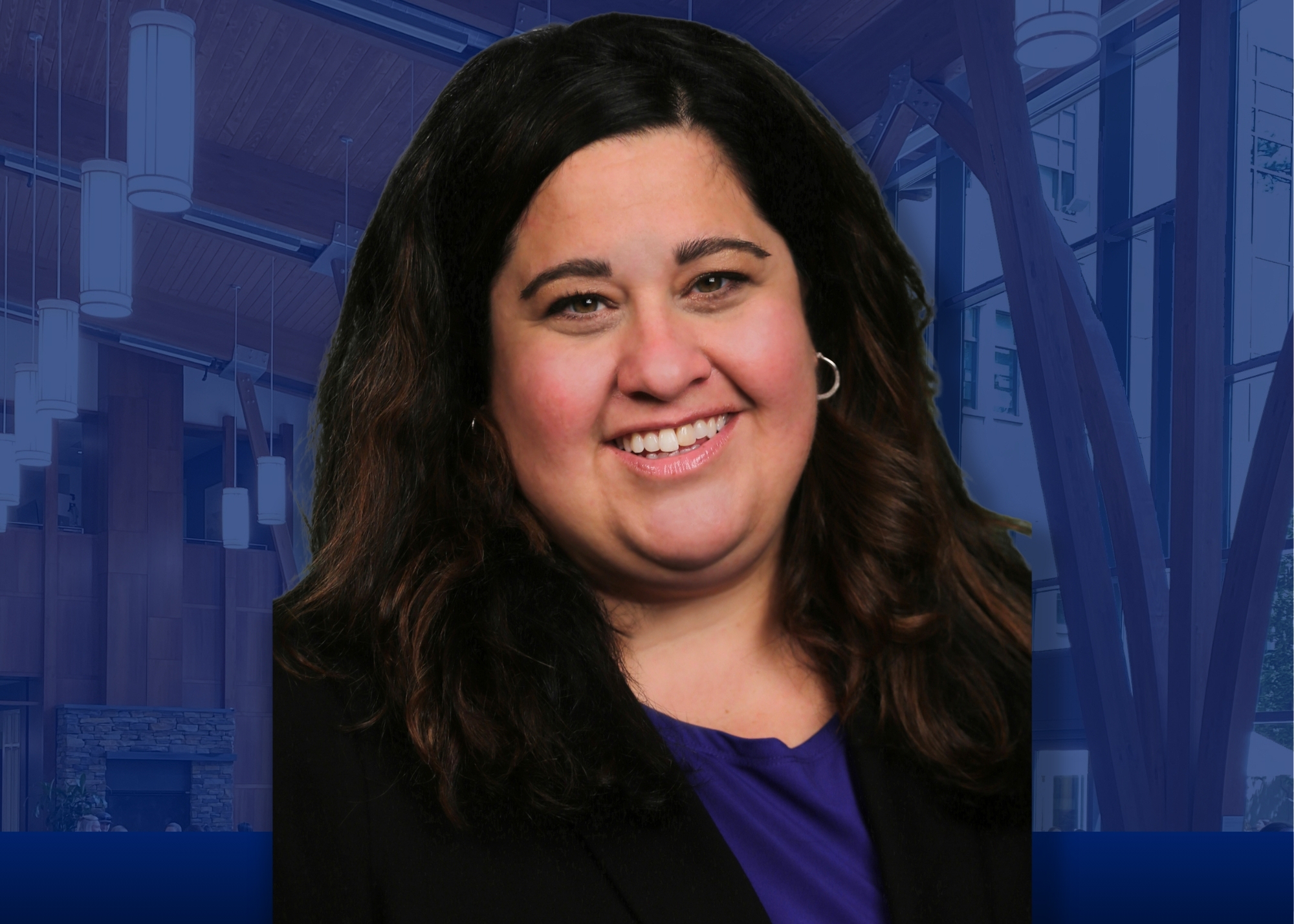Simulation Technology is Helping Reimagine Nursing Education

One nurse puts on a virtual reality (VR) headset to get inside the mind of an elderly patient with early onset dementia. Another diagnoses a patient who shows up not in person in a clinic, but remotely via hologram. These might sound like scenes from a healthcare-based episode of Star Trek, but in reality, they’re part of the regular curriculum in the School of Nursing’s Center for Nursing Discovery (CND), where Nikki Petsas Blodgett, PhD, RN, CHSE and her team are using the latest in simulation technology to reimagine nursing education. Combining technology with transformative nursing education is just one more way that Duke is leading the charge on innovating for the healthcare needs of today and tomorrow.
Nursing VR – Simulating Patient Scenarios
The hallmark of nurse excellence and expertise is the ability to empathize with patients—to put yourself in a patient’s shoes and come up with a plan of care that centers their experiences, values, and realities. In real life that is done through person-to-person communication, taking detailed health histories, involving a patient’s family in their care, and more.
What if nursing education created opportunities for students to see the world as their patient see it? How could this help nurses provide more individualized care? How could this help nurses to better understand and empathize with the cultural experiences of their patients?
In the CND, Blodgett and her team are setting out to answer those questions. Popularly familiar as a gaming platform, VR headsets have the ability to support significant advancements in nursing education by allowing students to experience the world through the eyes and ears of patients. With this technology, a student can embody the patient to better understand what life might be like for them—for example, understanding the experience of an elderly patient attending a checkup while depending on the support of their family.
“We’re allowing students to embody the older adult,” Blodgett explained. By donning the VR headset, the nursing student can experience conditions such as blurred vision, decreased hearing, or hallucinations – all common ailments for older patients.
In one simulation, the student watches and listens as the patient while a healthcare provider discusses treatment options with the patient’s family. The student is immersed in a simulated experience of the patient trying to understand what is being said.
“You get to have that experience of being left out of the healthcare decisions being made about you,” said Blodgett. “That’s a powerful change internally for the students.”
Deborah Osei, an ABSN student, assisted Blodgett and the CND staff in testing these VR scenarios. "Many of the emotions that the VR experience evoked were those that the patients were feeling. Whether it was frustration because I couldn't pick something up, sadness because I was left out of my care, or even fear because I wasn't aware of what was happening, the VR gave me a glimpse of what patients might experience regarding their care," Osei said.
The simulation experience, incorporating real actors, sometimes elicits powerful emotional responses from those who wear the VR headset. “We want emotional change in the students,” Blodgett explained.
Holograms – The Next Dimension of Learning
One of the newest additions to the extensive simulation toolkit utilized by the CND is not one, but two hologram machines. Like the VR headsets, these systems are designed to allow students to experience real life healthcare situations before they enter the workforce. The difference here is that students are interacting with a full-scale patient right in front them—there is no need to put on a headset because there is a hologram of the patient in the room.
The CND team worked with Senior Community Care of North Carolina, a Medicare and Medicaid funded PACE (Program of All-Inclusive Care for the Elderly) provider, to design scenarios that capture common types of patients and healthcare visits. They then teamed up with Durham-based educational consultants Theater Delta to cast actors and act out the scenarios.
In the holographic scenarios, the educational goals focus on what Blodgett calls the “Four M’s” – mentation, medication, mobility, and what matters. Students interacting with a patient in the hologram portal can ask questions of the patient while also observing the full person, considering signs like a patient’s body language, stance, and more. For example, the student may ask questions regarding the patient’s mobility while also observing that the patient has shaky hands or seems to be favoring one leg over the other.
This state-of-the-art approach to nursing education provides students with what Blodgett calls real life training prior to going out into a clinical setting. Following their training on the hologram machine, the students partner with a preceptor in a PACE-funded clinical placement.
Nurses Advancing Geriatric Excellence Through Simulation
Both the virtual reality and the holographic simulation training are funded by a Health Resources & Service Administration (HRSA) grant Blodgett and her team are implementing. The program, called NUrses Advancing Geriatric Excellence through SIMulation (NU-AGE-SIM), aims to enhance nurse education and strengthen the nursing workforce by increasing training opportunities for nursing students in the care of medically underserved older adults facing behavioral and mental health challenges. By utilizing simulation-based technologies, the CND and the School of Nursing are able to address the unique health challenges faced by older adults while increasing nursing students’ readiness to practice upon graduation.
While there is no failsafe substitute for real-life experience when it comes to nursing education, the CND shows that by using this technology, the School can provide students with simulated experiences that come very close to the real thing.
The NU-AGE-SIM Scholarship: NUrses Advancing Geriatric Excellence with SIMulation is supported by the Health Resources and Services Administration (HRSA) of the U.S. Department of Health and Human Services (HHS) under grant #48HP52020‐01‐00 Nurse Education, Practice, Quality and Retention Simulation Education Training Program. The information or content and conclusions are those of the author and should not be construed as the official position or policy of, nor should any endorsements be inferred by HRSA, HHS, or the U.S. Government.


